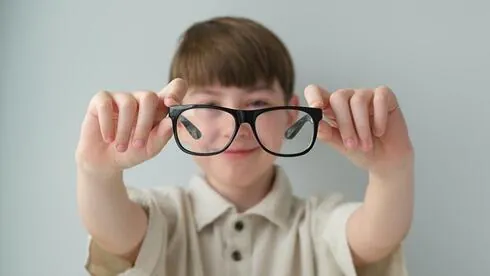
Shocking Truth Revealed: One-Third of Children Globally Struggle with Myopia Due to COVID-19!
2024-09-30
Shocking Truth Revealed: One-Third of Children Globally Struggle with Myopia Due to COVID-19!
A startling new study published in the British Journal of Ophthalmology reveals that one in three children around the world suffers from myopia, or nearsightedness. This worrying trend is not simply due to genetics or aging; the COVID-19 pandemic has significantly exacerbated this global health crisis.
The research, which analyzed data from over five million children and adolescents across 50 countries, indicates that the prevalence of myopia has tripled since 1990, with an alarming spike noticeable since the pandemic began. Lockdowns forced children indoors, leading to increased screen time and decreased physical activity outside. Dr. Mohammed Atamna, an ophthalmology expert, states that this prolonged indoor confinement has created a perfect storm for eye-health issues.
Dr. Atamna notes, “Children today are much more likely to need glasses than those from previous generations. This is partly because parents are more vigilant about regular vision tests. However, the overwhelming increase in screen usage for learning and entertainment during lockdowns has also played a significant role.”
The Eyes Have It: Is Screen Time the Hidden Epidemic?
Remarkably, countries in Asia report the highest rates of myopia, with staggering statistics showing that 85% of children in Japan and 73% in South Korea are nearsighted. In stark contrast, nations like Paraguay and Uganda report rates as low as 1%. According to studies, environmental factors are pivotal; children in regions where formal education begins at an earlier age, such as Singapore and Hong Kong, tend to develop myopia sooner due to increased screen exposure and less outdoor play.
The situation is particularly dire for young girls, who are more prone to myopia than boys. Dr. Atamna suggests this could be due to societal pressures that lead to reduced outdoor play for adolescent girls. The lack of natural light they are exposed to hampers their eye development.
Expert Tips for Safeguarding Your Child's Vision
Dr. Atamna emphasizes the importance of proactive measures that parents can take to combat this growing issue:
1. **Two Hours of Outdoor Activity Daily**: Encourage children to spend at least two hours outside every day. Natural light and physical activity promote healthy vision.
2. **Regular Vision Check-Ups**: Schedule eye exams at critical developmental ages – at birth, age one, three, and six.
3. **Control Screen Time**: Rather than banning screens outright, limit usage. Create rules for when and how devices can be used throughout the day.
4. **Nutritional Needs**: Ensure your child’s diet supports eye health. Foods rich in vitamins A, B6, B12, and iron, such as fish, eggs, and carrots, are essential for maintaining good vision.
5. **Watch for Red Flags**: Parents should be vigilant for signs of vision problems, such as squinting, difficulty focusing, or holding books too close.
A Call to Action
Recognizing the urgency of this issue, health experts predict that millions more children could join the ranks of those with myopia by 2050. With increased awareness and expert guidance, parents and communities can work together to reverse this tide of poor vision in the next generation. So, let’s put down the screens, step outside, and encourage our children to look up–to a brighter, clearer future!



 Brasil (PT)
Brasil (PT)
 Canada (EN)
Canada (EN)
 Chile (ES)
Chile (ES)
 España (ES)
España (ES)
 France (FR)
France (FR)
 Hong Kong (EN)
Hong Kong (EN)
 Italia (IT)
Italia (IT)
 日本 (JA)
日本 (JA)
 Magyarország (HU)
Magyarország (HU)
 Norge (NO)
Norge (NO)
 Polska (PL)
Polska (PL)
 Schweiz (DE)
Schweiz (DE)
 Singapore (EN)
Singapore (EN)
 Sverige (SV)
Sverige (SV)
 Suomi (FI)
Suomi (FI)
 Türkiye (TR)
Türkiye (TR)